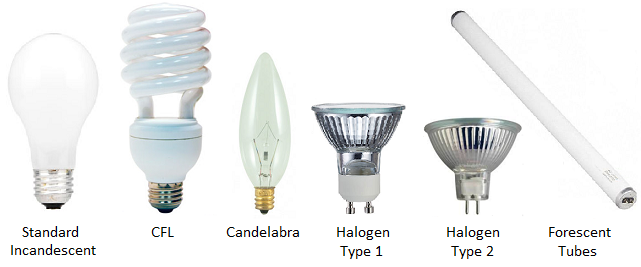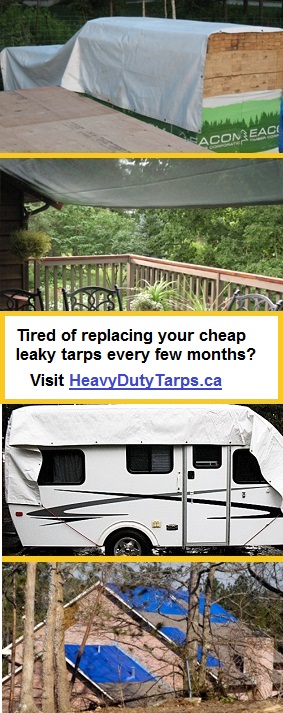Replacement LED lights will eventually pay for themselves, the question is, how long will it take? There are many factors that need to be considered when answering this question. These are discussed in the following sections and we provide some recommendations at the end.
LED Light Efficiency
Excluding natural lighting, LEDs are the most efficient form of lighting today. You can now buy LED bulbs that are very similar to traditional 60 Watt bulbs in terms of appearance and lumens (brightness) however they only use about 10-15% of the electricity. When choosing LEDs you should decide whether you want bright or soft lighting and if you want the bulbs to be dimmable make sure the labelling indicates that they are because not all LEDs are dimmable.
Existing Lights
Many people have already replaced their inefficient incandescent with compact fluorescent (CFL) bulbs, those are the ones with the curled up tubes that have been popular for the past decade or more. CFLs are about 4x more efficient than incandescent bulbs so for about 13 watts you can get the same amount of light as is shed by a 60 watt incandescent bulb. Halogens are also common and these are not very efficient using generally between 50 watts and 100 watts. A comparable LED bulb uses about 8.5 watts.
At the risk of stating the obvious, you will get a lot shorter payback by replacing your least efficient bulbs that are most often used.
Longevity
LED lights last much longer than other forms of lighting. Many are rated to last over 30,000 hours. By comparison, incandescent lights typically only last about 1,200 hours, halogens are in the 2,500 hour range and CFLs last about 10,000 hours. This is particularly important for hard to reach fixtures such as those in cathedral ceilings. In your cost benefit analysis you need to consider the fact that you may have to replace another type of bulb ten times rather than just buying one LED light.
Location
In most homes and businesses, some lights are illuminated much of the time while others are rarely turned on. For example, a closet light may only get switched on for a couple of minutes every day. Even with today's high electricity rates you can power a light for two minutes a day at a cost of about 15 cents per year. It might take 50 years to recoup the cost of replacing such a bulb with an LED.
On the other hand, a business that is open 9 hours per day and 260 days a year might have several 60 watt bulbs burning during this entire time. The cost to power a single 60 watt bulb for this business would be about $30/year vs. $4.40/year for an 8.5 watt LED. In this case, the LED purchase would pay off in a matter of a 3 or 4 months. Even in this situation, the conversion to LEDs becomes less compelling if you are already using efficient CFL bulbs or florescent tube lighting. In this case your savings will only be about 2 or 3 dollars per year so the break-even point is likely 3 or 4 years out.
Time of Use
In case things weren't complicated enough, in Ontario and other jurisdictions with smart meters, the cost benefit changes based on when you use your lighting. Lights used at night and on weekends cost less to power than lights used during the day.
Recommendations
If/when LEDs become less expensive, switching en masse to LED lighting in all homes and businesses will become a "No Brainer". In the meantime, we recommend taking a methodical approach to this process by following these steps:
1. Take an inventory of all light bulbs in your home or business
Most people will be surprised when they calculate how many lights are in their home because this is not something we think about very often. Create a sheet of paper which contains the following columns.
Room Location Bulb Type Wattage Off-Peak Hours Per Week Other Hours Per Week Adjusted Hours
Under Bulb Type enter Incandescent, CFC, Halogen, LED, etc. The type also needs to consider the bulb's "footprint".

Here is a summary of the LED landscape for these common types of bulbs.
- LED bulbs to replace conventional incandescent bulbs are readily available for about $10 each.
- CFLs generally have the same footprint as conventional bulbs so they are interchangable.
- Candelabra bulbs often have a smaller fixture can be replaced with a 5 watt LED version for about $6.
- Halogen bulbs have LED equivalents but tend to cost more ($15-$20 range).
- LED replacement for fluorescent tubes (LFL bulbs) have recently entered the market and are still quite expensive. Traditional LFL tubes are fairly efficient but LED replacements can still cut your power consumption in half. Nevertheless, we recommend waiting a while before replacing your LFL tubes with LEDs.
Referring back to our bulb inventory, the off-peak hours per week column reflects the bulb use hours from 7:00 PM to 7:00 AM and on weekends (assuming you are in Ontario). The Other Hours are from 7:00 AM to 7:00 PM weekdays.
In the Adjusted Hours column enter the sum of the Off Peak Hours plus 2x the Other Hours. So, for example, if you had entered 10 Off Peak Hours and 7 Other Hours the adjusted hours would be 10 + (7 x 2) = 24.
Note that the average of mid-peak and on-peak rates is not quite 2x off-peak but this is close enough for our purposes. We don't bother splitting these out since the Mid-Peak and On-Peak times flip-flop every six months so we will just use an average.
Don't forget to count individual bulbs and not just the fixtures. Also check your garage and outside for driveway and yard lighting.
2. Sort the Bulbs by Footprint and Adjusted Hours
If you can enter your data into a spreadsheet you can do an electronic sort, otherwise just make a note of the highest adjusted hours by type.
3. Buy LED lights for Highest Use Areas
Your sorted bulb sheet becomes your priority list for replacing LED bulbs. Any rows that have an Adjusted Hours value of 25 or more will have a payback period of less than a year when switching from Incandescent to LEDs. This is where your budget comes into play, if money is no object you probably want to replace most of the incandescent or halogen bulbs on your list that have an Adjusted Hours column of 5 or more even though the break even point could be a few years out.
Your approximate annual savings can be calculated by taking the different in the current and LED wattages and multiplying this by your Adjusted Hours per Week * .005.
For example, if your 60 bulb is currently on from 6:30 AM - 7:30 AM and from 5:00 PM - 7:00 PM on weekdays and 4 hours per day on weekends you would have 10.5 Off Peak Hours and 12.5 Other Hours. This results in an Adjusted Hours value of 35.5. If your replacement LED is 8.5 watts your wattage reduction is 51.5. So the annual savings would be about 51.5 * 35.5 * .005 = $9.14.
4. Redeploy and Freed up CFLs
If some of the high use fixtures you are replacing with new LEDs already have CFL bulbs you should use these swapped out bulbs in other lower use fixtures that are still using incandescent bulbs. Think of it like a factory where you are bringing in some cheap labour (LED Bulbs) to be used for all of the long shifts and, at the same time, you are getting rid of your most expensive labour (incandescent bulbs). You take a one-time hit to pay early retirement (the cost of the LED bulb). Not only will you overall payroll go down (your electricity bills) but you will also save on turnover costs (LEDs last longer) and hiring costs (bulb maintenance).
If all of your fixtures are already using CFL bulbs the case for LEDs is less compelling. You might just want to buy a couple of LEDs to use the replace the CFLs as they burn out and gradually move to LEDs. Chances are the LEDs will get cheaper as does most new technology.
It should be noted that cost is not the only criterial to be considered. LEDs generate less heat so there is less risk that a bulb could start a fire. Also, CFLs and LFL tubes contain mercury to are more harmful to the environment. CFLs are also know to explode and cause fires on rare occasions.
